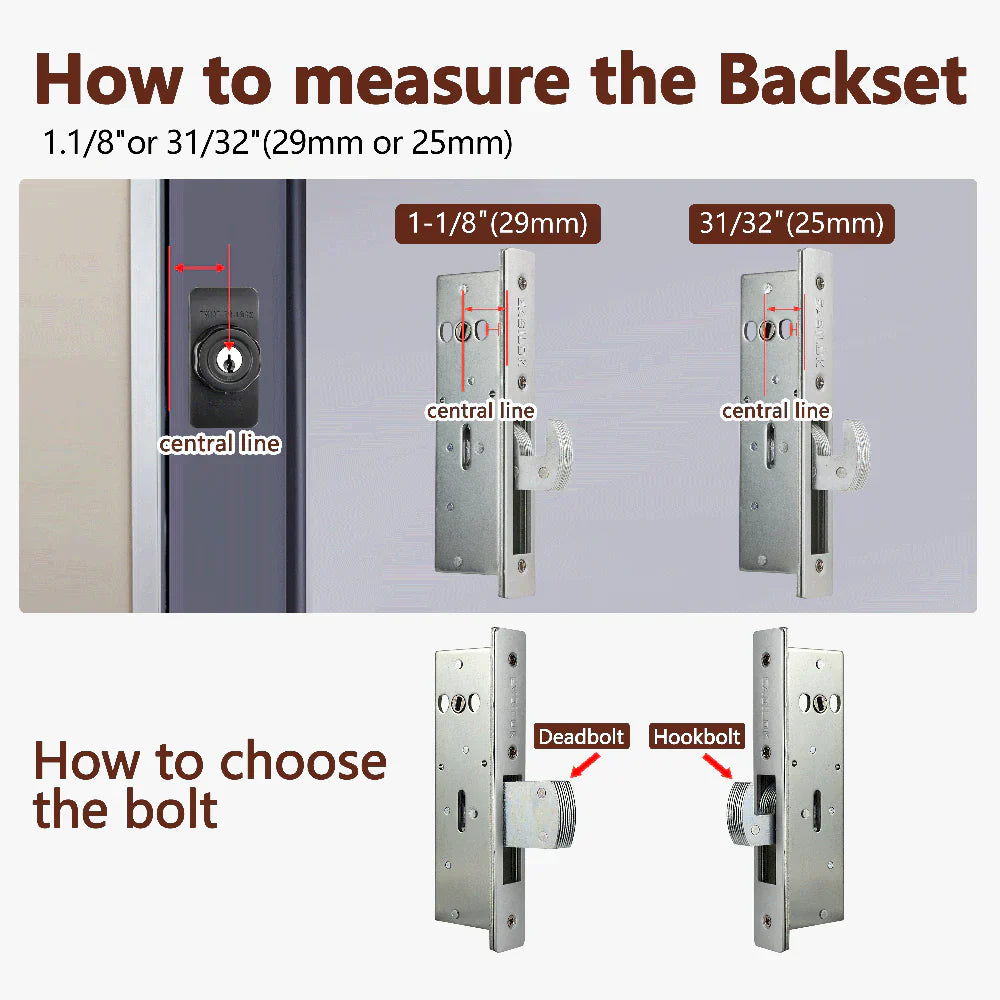
Why a Locksmith Recommends a Deadbolt for Sliding Door Locks
Share
When it comes to securing your home, sliding doors can present unique challenges. Unlike traditional hinged doors, sliding doors are often seen as more vulnerable due to their design and installation. However, there is a solution that many locksmiths recommend for improving the security of sliding doors: the deadbolt.
In this blog, we will explore why a locksmith would suggest using a deadbolt for sliding door locks and how this simple yet effective upgrade can make a significant difference in the security of your home. By the end, you'll understand how a deadbolt enhances the overall safety of sliding doors, and why it’s one of the most trusted solutions for protecting your property.
What Makes Sliding Doors Vulnerable?
Sliding doors are an attractive and functional addition to many homes, offering easy access to outdoor spaces, patios, or gardens. However, their design can make them more susceptible to forced entry. One of the main vulnerabilities of sliding doors is the ease with which they can be lifted off their tracks or forced open. Most sliding door locks are relatively basic, and many intruders know how to bypass these locks.
In comparison to traditional doors with deadbolts, sliding doors may only have a simple latch or lock mechanism, which can be easily manipulated with basic tools. Because of this, many homeowners opt for additional security measures to reinforce their sliding doors, with the deadbolt being one of the most effective options recommended by professional locksmiths.
Why a Deadbolt is a Superior Choice for Sliding Doors
Deadbolts are one of the most secure types of locks available, and they offer superior protection compared to standard sliding door locks. A deadbolt operates differently than a regular spring latch lock: it does not rely on a spring to stay in place, but rather uses a solid metal bolt that extends into the door frame when locked. This mechanism makes it much harder to force open than a simple latch lock.
When installed on a sliding door, a deadbolt creates an additional layer of security. Even if someone attempts to lift the sliding door off its tracks, the deadbolt will keep it securely in place, preventing unauthorized entry. This added security is crucial for homeowners who want to ensure their sliding doors provide maximum protection.
Benefits of Installing a Deadbolt on Sliding Doors
There are several key benefits to installing a deadbolt on your sliding door, and it’s not just about preventing break-ins. Let’s take a look at some of the main advantages:
- Enhanced Security: As previously mentioned, a deadbolt is far more resistant to tampering and forced entry than a standard sliding door lock. This added layer of protection makes it more difficult for intruders to gain access to your home.
- Peace of Mind: Knowing that your sliding door is equipped with a high-security lock gives you peace of mind. You can rest assured that your home is better protected against break-ins.
- Long-Term Durability: Deadbolts are built to last and withstand wear and tear. Unlike some standard locks that may become loose or damaged over time, a deadbolt maintains its effectiveness for years, providing consistent security.
- Deterrent to Burglars: A visible deadbolt lock on a sliding door can serve as a deterrent to potential burglars. Thieves are more likely to target homes with weaker security, so a reinforced sliding door sends a strong message that your home is well-protected.
How to Install a Deadbolt on a Sliding Door
While it’s always best to hire a professional locksmith to install a deadbolt, the process is relatively simple for those who want to tackle the installation themselves. Below is an overview of the steps involved in adding a deadbolt to your sliding door:
- Choose the Right Deadbolt: Not all deadbolts are designed for sliding doors. Make sure to select a deadbolt that is compatible with the sliding door system.
- Mark the Placement: Measure and mark where the deadbolt will be installed on the door frame. Make sure the bolt will line up correctly with the strike plate.
- Drill Holes: Using a drill, carefully drill holes for the deadbolt lock and bolt. Make sure to follow the manufacturer’s instructions to ensure a secure fit.
- Install the Deadbolt: Install the deadbolt mechanism and secure the strike plate to the door frame. Test the lock to ensure it works properly.
If you're unsure about performing this installation on your own, it's always a good idea to consult a professional locksmith to ensure the deadbolt is installed correctly and securely.
Combining a Deadbolt with Other Security Features
While a deadbolt can significantly enhance the security of your sliding door, it’s also important to consider other security features to further strengthen your home’s defense. For example, many homeowners pair a deadbolt with a sliding door lock that provides additional locking points and prevents the door from being removed from its track. Adding a security bar across the sliding door track is another excellent way to reinforce the lock and deter burglars.
Combining these features can create a nearly impenetrable defense against break-ins, ensuring that your sliding door provides both accessibility and security.
When it comes to securing your home, installing a deadbolt on your sliding door is one of the best investments you can make. Not only does it provide enhanced security, but it also offers long-term durability and peace of mind. By following the advice of a professional locksmith and adding a deadbolt to your sliding door lock system, you can rest assured that your home is protected from unwanted intruders.
So, if you haven’t yet installed a deadbolt on your sliding door, consider doing so today. Your home’s security—and your peace of mind—will thank you.

